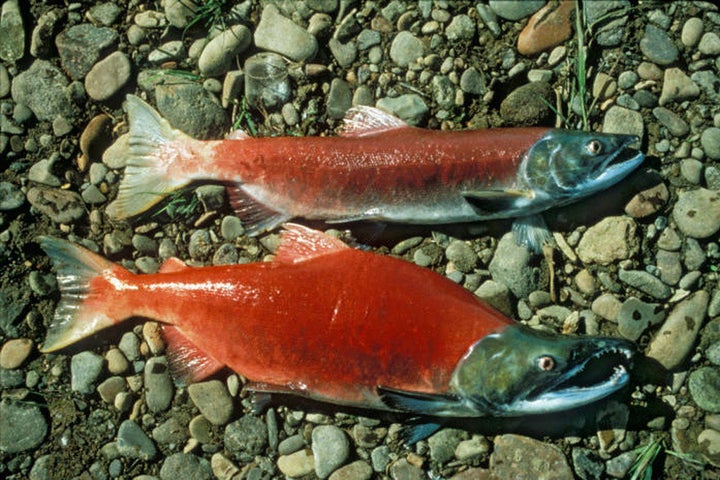
This is a story of sex, deceit and the desperate struggle for survival. And it plays out every year like a Greek tragedy, starting with romance and ending in... yes, death. It is the saga of what you probably once thought of as just another fish. The saga of the Coho Salmon.
Hatched in freshwater, salmon eat, grow and practice their survival skills in the creeks and river systems in which they are born for one to two years before they journey to the ocean. They swim the seas for six months to five years. Then, those lucky and skilled enough to survive to maturity tenaciously trek upstream back to their place of birth where males diligently court females, the two sexes spawn, and then regardless of their success or failure, they ultimately die shortly thereafter.
Sex is the prime directive, but which fish are the most successful?
Sounds dramatic and rightly so. In all animals, ranging from tiny insects to the largest mammal, sex is the prime directive; the meaning of life; the only way for most animals to pass on their genes. And not everyone gets the opportunity.
Who's the most successful? Common sense dictates that the strongest competitors, the largest males with greatest might, win the most females whereas the little guy finishes last but, for some species, such as in various fish, the plot takes some interesting twists. From fish that start out as females when they are small and change into males when they are large enough to defend a harem to species in which big burly males duke it out for access to females and smaller, more effeminate males sneak in under their radar to mate undetected, there are a number of alternate strategies for successfully passing on one's genes.
Coho Salmon go for the strategy involving two types of males. The large, fierce hooknoses directly compete for females and the smaller cryptically-colored jacks rely somewhat on stealth. For many years, researchers couldn't help but view the large muscular males as the superior style; however, research by Dr. Jason Watters, a behavioral ecologist, during his doctoral studies at the University of California at Davis indicates that this may not be the case.
According to Watters in an interview when he was still at UC Davis, the little jacks were once the largest, most successful juveniles. "Jacks grew more quickly as juveniles and then headed out to sea first. Then they returned to spawn at least a year earlier than hooknoses."
Jacks developed from juveniles referred to as territorials that chose and were best able to defend a low flow area of the shallow part of a stream called a riffle. These territories contained abundant food allowing these juveniles to grow quickly compared to other young salmon in less abundant areas. So they headed out early as the largest juveniles and then matured in a short six months to a small, camouflage-colored jack. The less successful, smaller juveniles waited longer to go out to sea and then spent more time there. When it was their turn to head home, they came back large and with a flashy red hue to their normally silvery scales.
Based on the good genes hypothesis that says that females choose males with features that indicate they have good genes, this early success is highly significant. "It takes a proven winner to become a jack," says Watters, "so females have plenty of reason to prefer jacks."
By choosing to mate with jacks, not only would they get the male that played a better strategy early on, they would also get the male who might pass on traits leading to a shorter maturation time in the offspring. Theoretically that means females who mate with jacks could be able over many generations to produce more offspring than those who mated with hooknoses.
To see whether females did indeed actually prefer jacks over the masculine hooknose, Watters observed salmon spawning in the wild. He watched the large hooknoses fight for access to females with these salmon suitors lining up in a row in order of dominance rank right behind the female. Cryptically colored jacks also stationed themselves close by and were often closer to the female than any of the hooknoses.
After countless hours of spying on the spawning, Watters found that 75 percent of the jacks got to mate while only 58 percent of the hooknoses got the chance. Also, while the flashy hooknoses nudged, bit and coerced females into mating while chasing competitors away, jacks were gentler with the females. Their quiet, gentler strategy paid off not only in more matings, but also in longer spawnings. Females spent more time laying eggs when jacks were present.
Overall, both the hooknose and the jack strategies are effective, and having two strategies increases the genetic variation in the salmon population. But this slight preference for the little guy says something important. Being big and strong and bossing others around isn't always the best strategy. In some species, the nice guy comes out first.
For more interesting facts about various aquatic species, read about my behind the scenes tour of the Shedd Aquarium in Chicago.